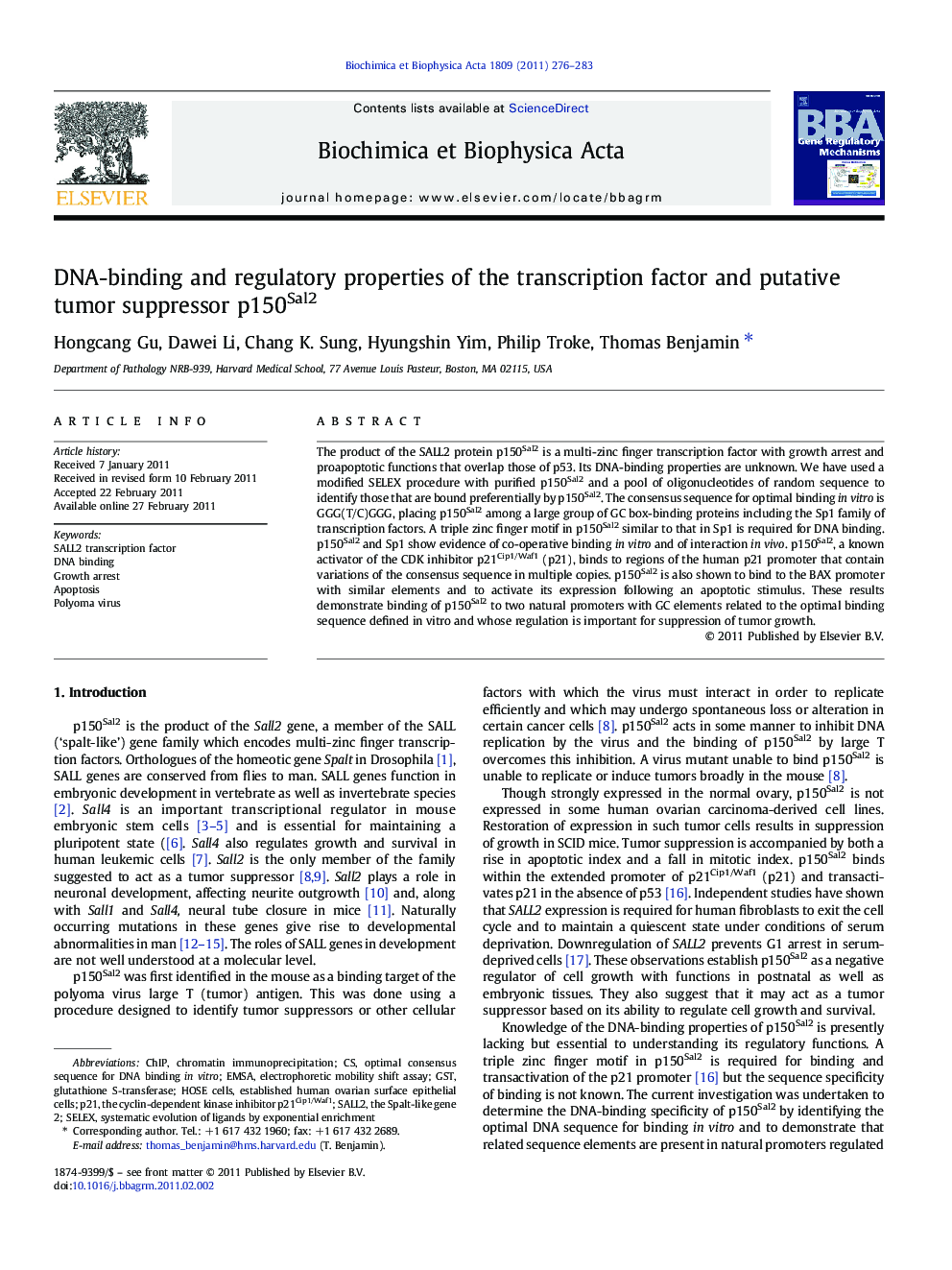| Article ID | Journal | Published Year | Pages | File Type |
|---|---|---|---|---|
| 1946700 | Biochimica et Biophysica Acta (BBA) - Gene Regulatory Mechanisms | 2011 | 8 Pages |
The product of the SALL2 protein p150Sal2 is a multi-zinc finger transcription factor with growth arrest and proapoptotic functions that overlap those of p53. Its DNA-binding properties are unknown. We have used a modified SELEX procedure with purified p150Sal2 and a pool of oligonucleotides of random sequence to identify those that are bound preferentially by p150Sal2. The consensus sequence for optimal binding in vitro is GGG(T/C)GGG, placing p150Sal2 among a large group of GC box-binding proteins including the Sp1 family of transcription factors. A triple zinc finger motif in p150Sal2 similar to that in Sp1 is required for DNA binding. p150Sal2 and Sp1 show evidence of co-operative binding in vitro and of interaction in vivo. p150Sal2, a known activator of the CDK inhibitor p21Cip1/Waf1 (p21), binds to regions of the human p21 promoter that contain variations of the consensus sequence in multiple copies. p150Sal2 is also shown to bind to the BAX promoter with similar elements and to activate its expression following an apoptotic stimulus. These results demonstrate binding of p150Sal2 to two natural promoters with GC elements related to the optimal binding sequence defined in vitro and whose regulation is important for suppression of tumor growth.
Research highlights► DNA-binding properties of p150Sal2 have been defined in vitro and in vivo. ► p150Sal2 binds to GC-rich elements in the p21Cip1/Waf1 and BAX promoters. ► p150Sal2 activates the BAX promoter following an apoptotic stimulus. ► These DNA-binding properties of p150Sal2 underlie its tumor suppressor-like functions.
